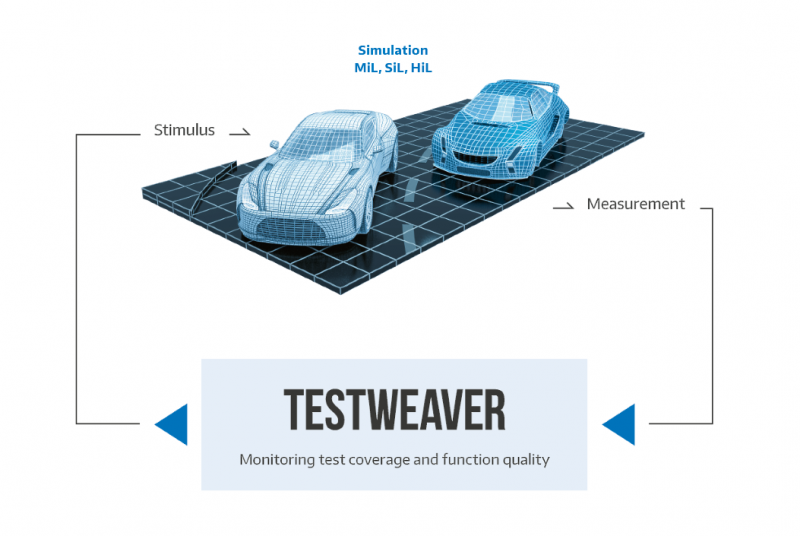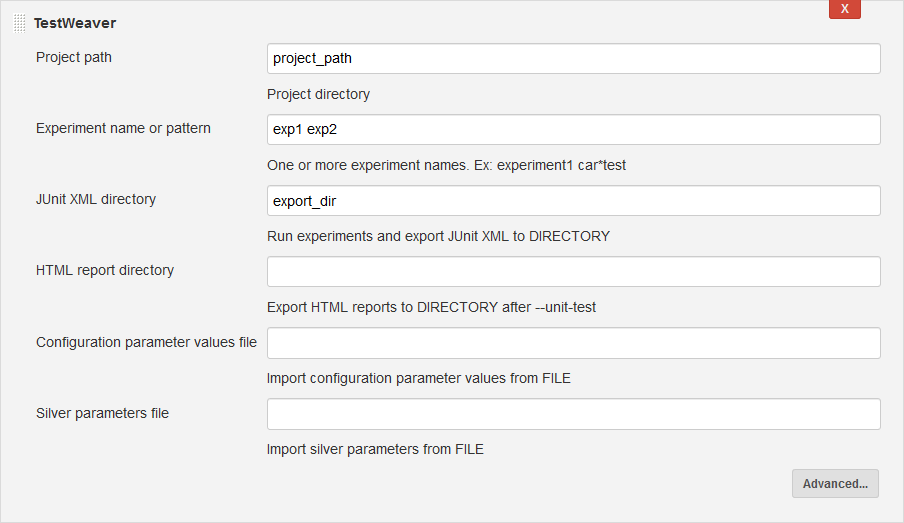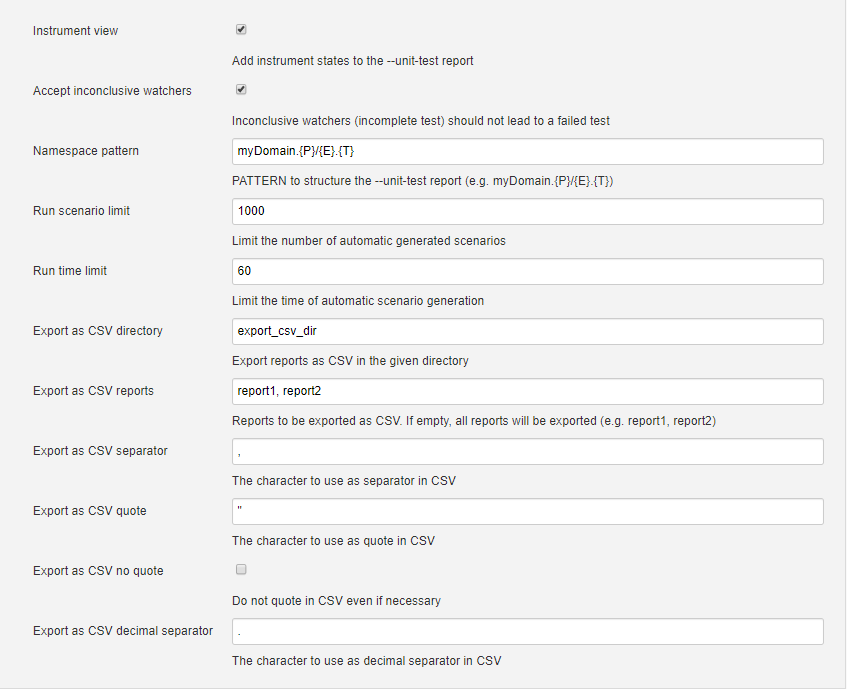TestWeaver is a tool for automated test and validation of control functions. TestWeaver generates, runs and evaluates thousands of test scenarios automatically. Each test scenario is a sequence of inputs over time, automatically performed during simulations. TestWeaver generates the tests in a reactive, informed way, trying to learn the system behavior from the results of the previous simulations, in order to increase state coverage and to actively worsen sub-optimal scenarios until the system behavior is really bad, i.e. a bug or a design flaw has been found. TestWeaver also supports classical test automation methods, based on:
-
interactive recording and replay of scenarios
-
user-defined test scripts, for instance with Python.
Supported development and simulation environments include: Silver, MATLAB/Simulink, Dymola, SimulationX, CarMaker, VTD and PreScan, as well as hardware-in-the-loop simulation platforms.
-
Fast development: early problem detection
-
High test coverage: thousands of high-quality tests
-
Low work load: more automation, less scripting
TestWeaver is in use for automated test and validation of complex systems at AMG, Bosch, Mercedes-Benz, Porsche, Volvo Car Corporation, IAV, SAIC, TREMEC, ZF and others.
TestWeaver can export the experiment results as reports in the JUnit XML format. This format is easy to integrate in Jenkins. TestWeaver will run in an automation mode that does not require any user interaction. After the export is finished TestWeaver closes automatically.
-
To start TestWeaver you are required to set the path to the TestWeaver project, the experiment names to be run and the path to the location where to export the JUnit XML result file. The experiment names can be specified using the wildcard syntax.
-
This starts one or more experiments automatically from the named project one after the other. Before being started, any existing scenarios of the selected experiments are deleted, so that the test results will be computed from scratch and are therefore up-to date.
-
Optionally, you can activate the generation of HTML reports of the executed experiments by setting the path to the directory where to store the HTML reports.
-
Optionally, you can specify a file with configuration parameters that have to be used for the current test and a file with silver parameters.
-
After the experiments are finished their results are exported in the JUnit XML format in a file called
unit-test.xmlin the namedexport_dir.
The Advanced button opens extra options for TestWeaver configuration.
-
In case you are using TestWeaver LIGHT the automatic scenario generation that can be performed by TestWeaver is disabled. In this case the experiments run user defined scripts and test databases, only. Additionally to the exported test cases for the user defined scripts and test databases, an additional test case will be reported for the consistency of the used SUT Configuration Parameters.
-
On the other side, in case you are using TestWeaver with the automatic scenario generation you must specify the options that control the termination of the automatic generation using at least one of the options:
-
Run scenario limit: NUMBERto limit the maximum number of automatically generated scenarios per experiment, and/ or -
Run time limit: MINUTESto limit the maximum amount of time allowed for the execution of an experiment.
-
-
Namespace pattern: PATTERNoption allows you to customize the aggregation of the test suites for software components. Jenkins / JUnit XML is able to display by default only three levels of aggregation. You might have more levels in your project. ThePATTERNargument allows you to specify a mapping, for instance:myDomain.{P}/{E}.{T}, will merge the project and the experiment name in the second level for the export - whereP,E,Tstand for project, experiment, test case. The default mapping (when you do not supply a specific namespace) is:{P}.{E}.{T}. -
Optionally, you can activate the export of reports as CSV by setting the destination directory. There are also other options that can be set regarding the CSV export (e.g. what reports to be exported, what separator to use).
For exporting the experiment results you can choose between the:
-
default export view: this exports the user defined scripts and scenarios from the test databases individually as test cases. In addition, the following properties are mapped to test cases as well:
-
completeness of tested requirement watchers, thus checking the coverage of the requirements monitored by watcher instruments.
-
in case automatic generation is enabled in the experiment specification, then one more test case will be exported, namely one that merges the pass/fail results of all automatically generated scenarios. For instance, if at least one automatically generated scenario detected a failure then the merged test case is marked as failed.
-
-
export with instruments view by checking
Instrument viewcheckbox: this gives more details than the default view, namely this exports every reporter and watcher instrument, as well as the termination monitor as a test case in the exported test suite.-
This view is recommended for the export of experiments that use the automatic scenario generation.
-
-
Jenkins 2.7.3 or higher
-
TestWeaver 3.4 or higher
This plugin is licensed under 3-clause MIT license.
More information can be found inside the LICENSE file.
-
new option: Accept inconclusive watchers. Inconclusive watchers (incomplete test) should not lead to a failed test. Available starting with TestWeaver 4.1.



